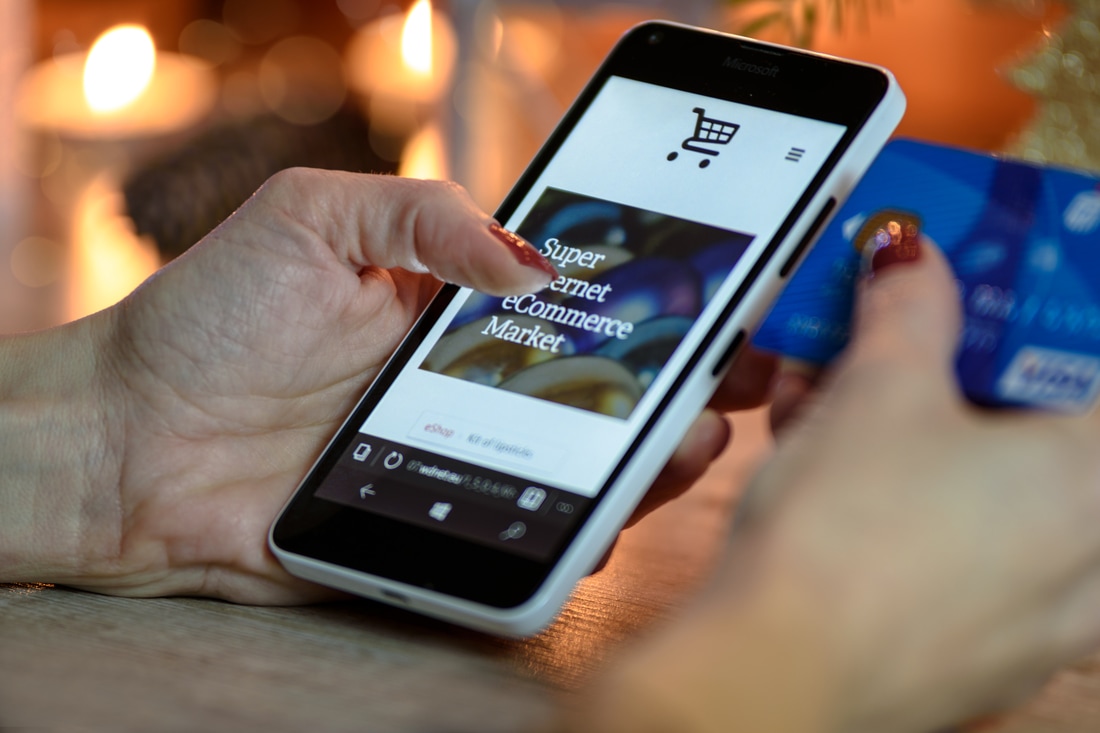6 TOP trends for 2017 – how technology is reshaping the world of e-commerce
Written by
Editorial TeamPublished on

We have had a great and exciting year in 2016, full of tech news which influenced the whole e-commerce world. In this article we recap some of the more important and influential innovations that were predicted for last year and are further shaping the future and evolution of e-commerce.
We take a look at six of the hottest trends that go hand with one another. Given that the total value of retail ecommerce sales worldwide is projected to reach 2,48 trillion USD in 2018, the question you need to be asking is: what share is your business going to be?
If you understand the upcoming development of e-commerce you’ll understand where and how to improve and upgrade all spheres of your business – sales, delivery, payment, marketing, and data analytics. But don’t worry, there are plenty of guides on how to succeed in this exciting industry.
Check following trends and get ready for your big success!
1. Mobile Commerce
The word ‘mobile’ comes up again and again, and for good reason. Indeed, the M-Commerce trend has been on a non-stop rise since 2014 and shows no signs of slowing. The dominant growth in European online sales has been the source of significant sales via mobiles (+88%) compared to laptops (+6%). Much of this has to do with Google’s development of a new indexing algorithm for mobile searches which was launched November last year. Given these facts it only emphasizes the need for e-commerce companies to focus on achieving a high ranking for their store on devices and search engines tailored toward mobile use.
It’s no longer about responsivity and optimization, but a shift toward mobile friendly apps and service is an absolute must, especially for up and coming businesses. To highlight its importance, marketers even have their own term for it: mobile engagement strategy. It’s about making mobile customer experiences as positive as possible, and as we enter into 2017 this point will become even more relevant as a decrease in desktop activity accompanies an increase in the usage of mobile devices.
To make things easier, try incorporating these 5 tips on how to improve customer mobile experience.
2. Artificial Intelligence
Chat bots & Personal Assistants
As the American tech giants opened up the use of their APIs to developers in 2015, so too was 2016 historically marked as the year chatbots came onto the scene. Founded on basic principles of artificial intelligence, chatbots were launched to help customers shop, provide help, and to engage them with a brand. It’s interactive messaging takes place via social media such Facebook, Twitter, WhatsApp and Google Allo, all with the purpose of putting a customer at ease by making them feel as if they’re talking with a real person. The more customers interact with the bots, the smarter they become, enhancing their ability to provide useful services – most bot programs incorporate an extraordinarily steep learning curve, letting them learn and adapt to human users quickly and efficiently. And, in an otherwise cold and impersonal world of computerized commerce, they also provide an element of humanness.

In an era when people are using messenger apps more than social networks, chatbots are great business opportunity for the upcoming year! If you don’t yet have one, there are already a number of platforms that allow you to create your own chatbot.
Something you can expect to hear a lot in 2017 is: “websites are replaced by apps, and apps are replaced by bots.” This, naturally, has led to the production and design of personal assistants – and you’ve probably had exposure to some of these yourself.
The first thing that might come to mind is Apple’s Siri, Microsoft’s Cortana, Amazon’s Alexa, or the movie Her. I think the last one is the best representation of what the near future holds in store, and by association, the future of e-commerce. Additionally, mobile personal assistants have also spawned the phenomenon of talk-to-machines which can interact with users, and will be a huge trend in 2017.
But how can you actually apply this technology to your business? Personal assistants can recognize speech and act as browsers, just to start. As a result, search optimization is often the first and easiest factor to take into consideration – specifically, optimization of your product attributes so that the PA can easily find the product the consumer is looking for.
3. Mobile Ordering & Payments
What’s more valuable than convenience? In a word, time. Especially for busy people who live fast and work hard, finding extra minutes in the day that they can spend on recreation or fun has become a huge issue in the dog-eat-dog world of e-commerce. Does that sound like you or your customers? These days time management is drilled into us – we just want to grab a cup of coffee on our way to work and not have to waste any extra time waiting in a queue. The third trend in our list offers a solution to this problem – order-and-pay apps.

The first one to use this system was Starbucks and it has sky-rocketed in popularity. The next biggest follower of this trend is McDonalds which plans to launch their long-awaited order-and-pay app in 2017.
“Every month of Q2, Starbucks has processed 8 million Mobile Order and Pay transactions, up from 6 million a month the previous quarter” – Adam Brotman, Starbucks’ chief digital officer.
Implementing these kinds of tools into your business model doesn’t come cheap, and involves professional development, but being a “first-mover” definitely pays off in the long run.
4. Loyalty Programs and Personalization
2016 taught us how important personalization is. Consumers are overwhelmed by all the content around them, so they become rather selective and discriminating in their tastes. Only those products or companies who can make an impression and stay in the customer’s mind will able to flourish. And that’s a challenge for 2017. One of the keys to success is personalization and if the customer feels that he or she is valued it will be harder for them to leave you.
According to DMNews, “53 % of consumers feel that it’s important for retailers to recognize them as the same person across all channels, and 78% are willing to allow retailers to use information from their in-store purchases to provide a more personalized experience.”
The issue is, how can you manage a personal approach towards hundreds of customers at once? Your data analytics can go a long way towards catering to individual tastes and experiences, but depending on the size and complexity of your company it can be difficult to get a comprehensive picture about your customers. Luckily, a number of technologies are slated for 2017 which will offer comprehensive solutions across a number of useful tools and services. The goal of e-commerce companies then is to find the best apps for analytics, customer behaviour tracking, and loyalty programs, and to set a proper marketing strategy. The sooner you start, the more successful you’ll be.
Customers want to be engaged with the brands they love so as long as the benefits flow both ways. This is where your marketing department comes into play significantly. Next to email and social media marketing, search marketing and ad display marketing will be indispensable in 2017. Read some advice how to split your marketing budget in 2017.
5. Social selling
As many people are familiar with social networks, they consider it a browser, a place where they can check products and brands. The goal for any entrepreneur then is straightforward: once a potential customer visits your page, make it impossible for them to not want to buy your product. Another hint for optimizing your Facebook product page and upgrading product attributes on other social sites you use is to implement buyable buttons.
While social selling in 2016 was provided in a way that was inherently intuitive, projections for 2017 indicate that a more strategically oriented approach will prove more effective in the future. Social selling aims to translate into real sales and marketing channels by putting an emphasis on KPIs such as leads generated and revenue.
Additionally, social selling is tightly connected to messenger bots, as mentioned above. Being available 24/7 to address customer concerns or questions is a must, especially if you want to sell your products globally, and the use of automated apps and software makes this a reality.

6. Same-Day Delivery
The technology of shipping and payment has also experienced expansive growth. As a rule, in a world that is so interconnected in real-time delivery speed has becomes the key factor in whether or not customers choose to buy your products. Delivery automation is a significant trend in this area. What do we mean by this?
Delivering products to the customers costs money, both when dealing with carriers and when international clients or customers are involved. Dealing with the “human factor” and face-to-face transactions, however, always presents some issues such as traffic jams, damaged products, time lost while drivers need to rest, limited amount of vans or vehicles, etc. Of course, many carrier services adhere to a high degree of quality and punctuality, but using them generates costs that you have to count into your product price. Offering free shipping is something taken for granted these days by customers, which may be another factor in determining whether or not you become their “one and only choice”.
Looking ahead, an automation of delivery is your best choice, sooner or later. The pioneer of this idea was none other than Google Express, followed soon after by Amazon Prime Air. With drone usage comes legislation issues, however, as it’s not legal to fly a drone without a special permission from the Federal Aviation Administration in the U.S., and other countries have their own legalities as well.

At first glance, it may seem like something out of science fiction to have mid-sized businesses providing delivery via drones. And yet, over the time, it will only become more affordable for carriers to replace trucks with drones or for companies to purchase their own drones as the technology improves and becomes more accessible. For all you tech lovers, 2017 will be a year of unmitigated progress. Be sure to keep your eye on this trend!
Summary
Thank you for reading this article to the end – I know it’s rather extensive but hopefully it’s given you an informative and exciting glance at what’s to come. Being successful in e-commerce isn’t easy but it’s applications are numerous. Now that you know some of the more interesting trends for 2017 and some tips on how to follow them, be sure to keep learning, start trying new things, and don’t forget to look back on your data to evaluate your progress. Good luck and have fun!


